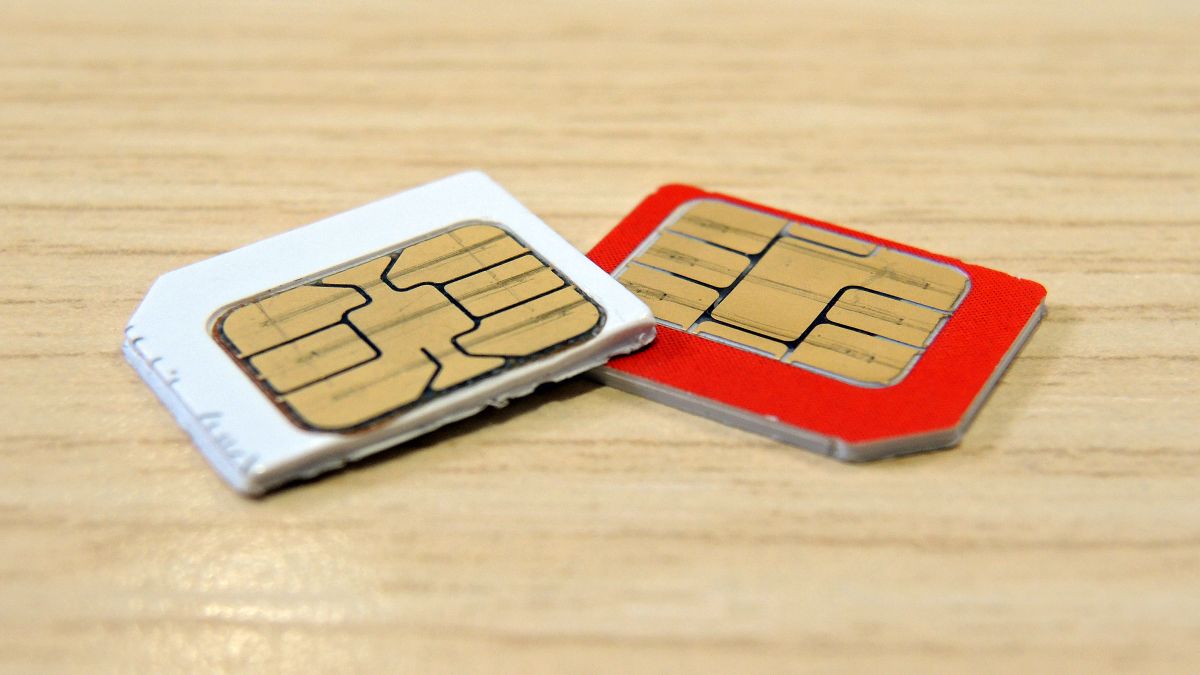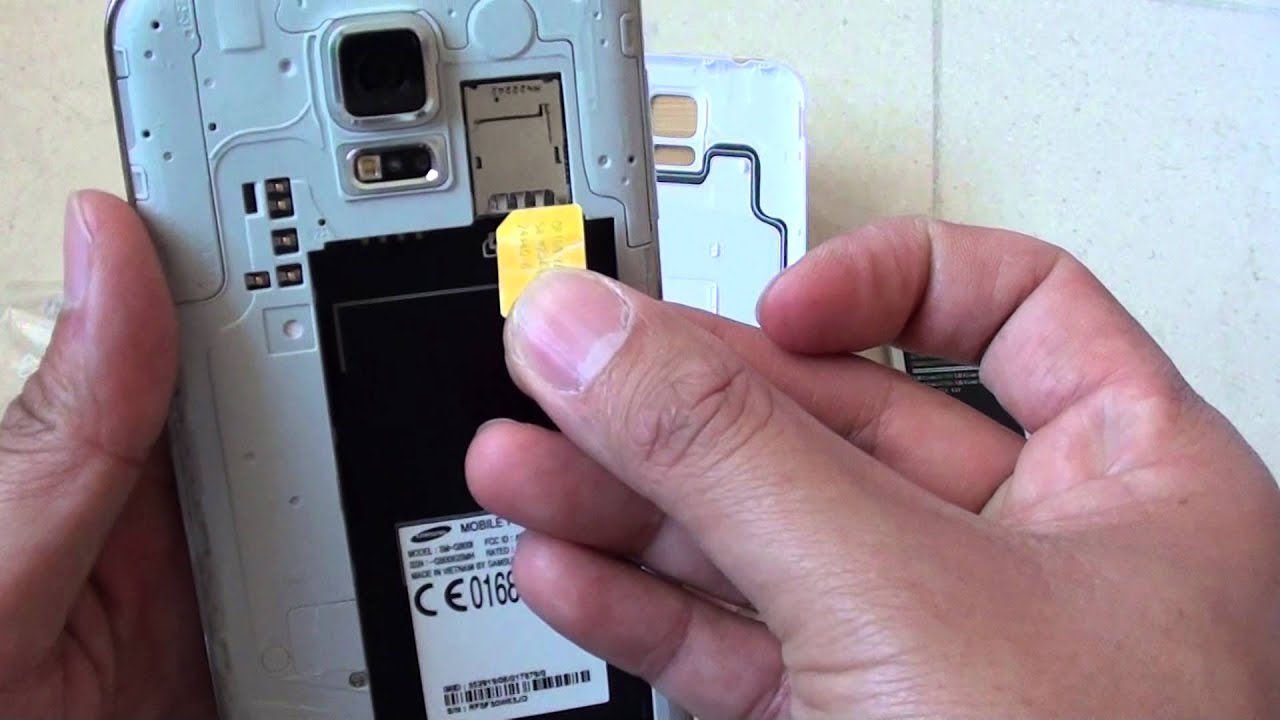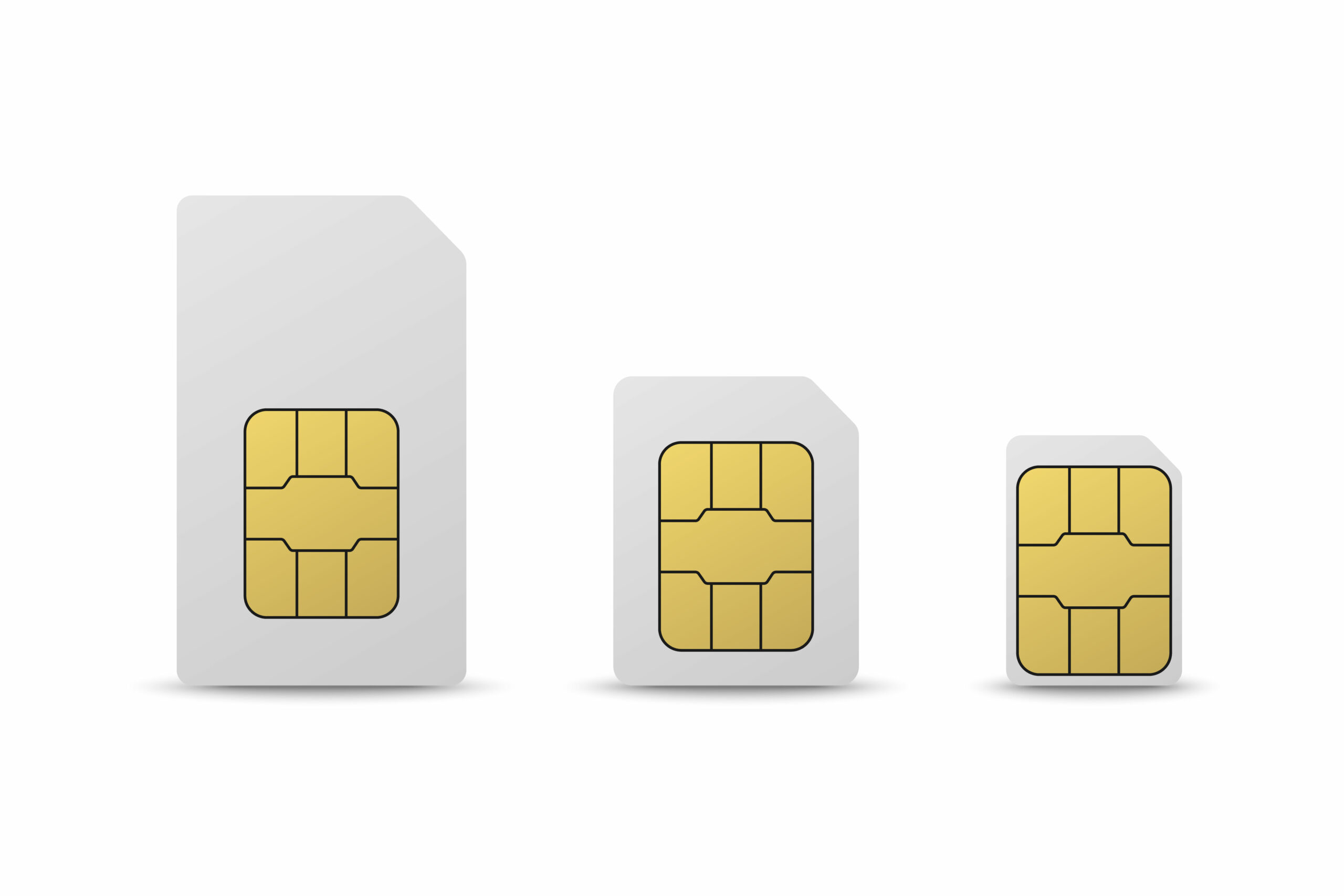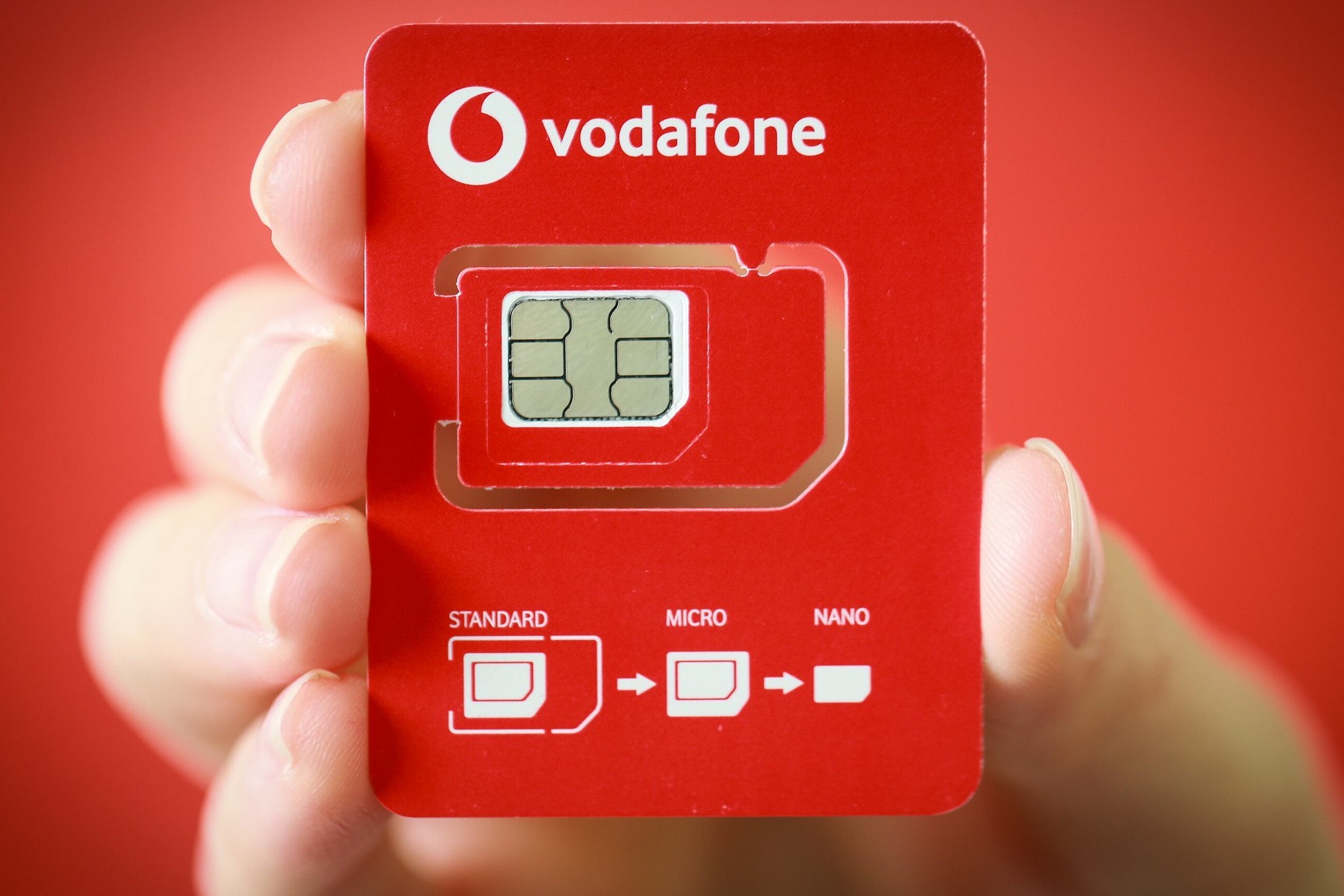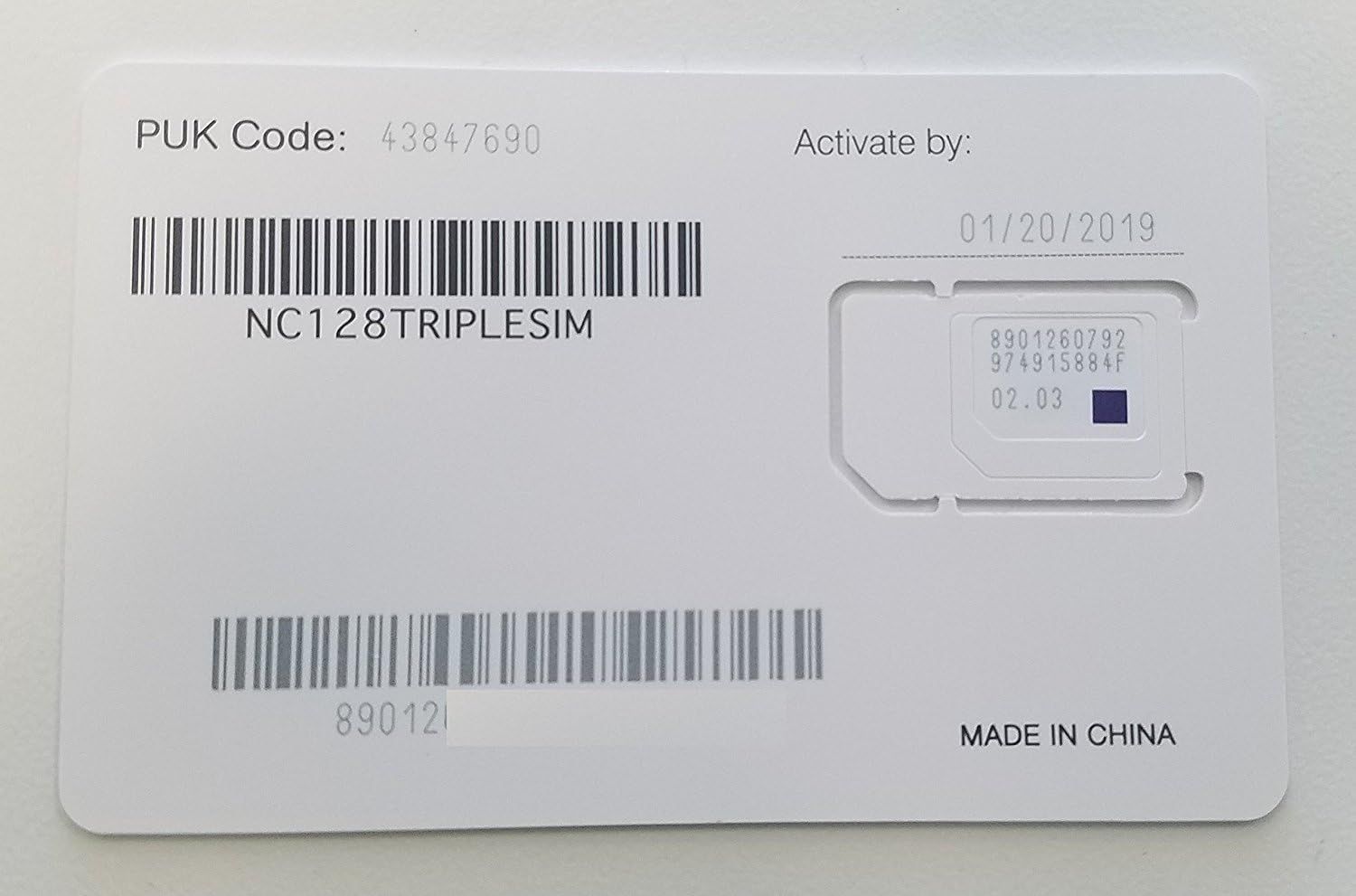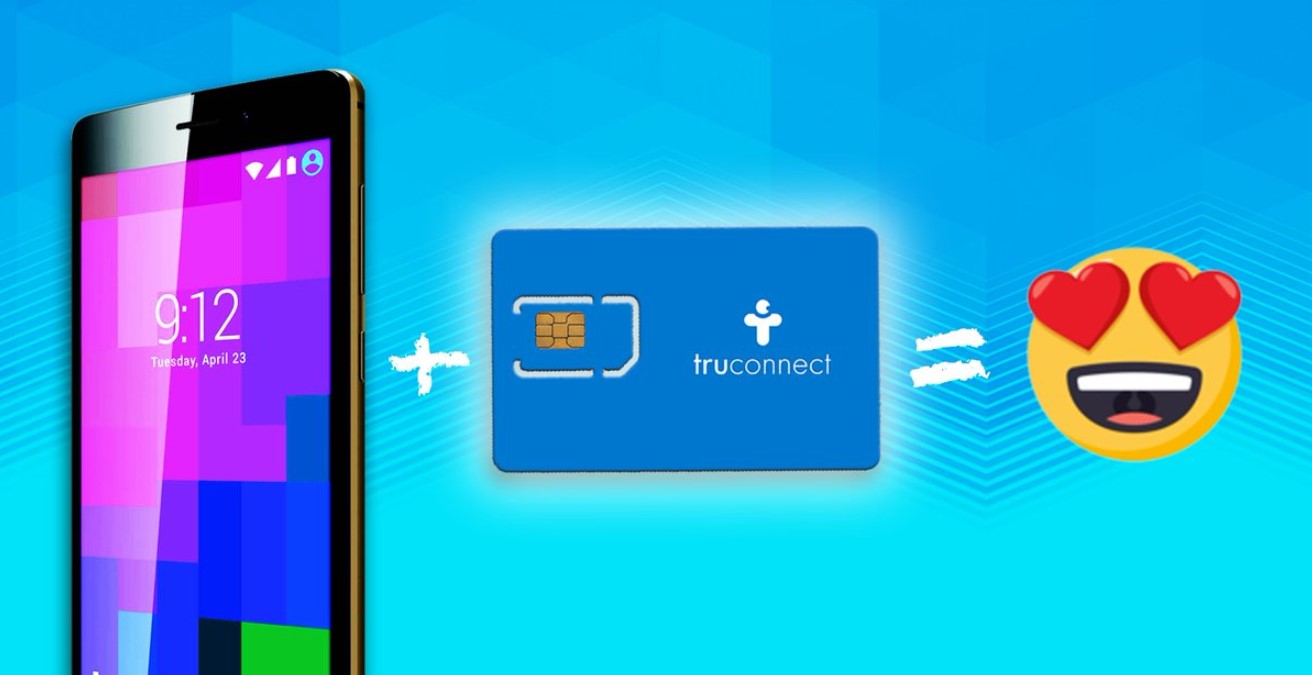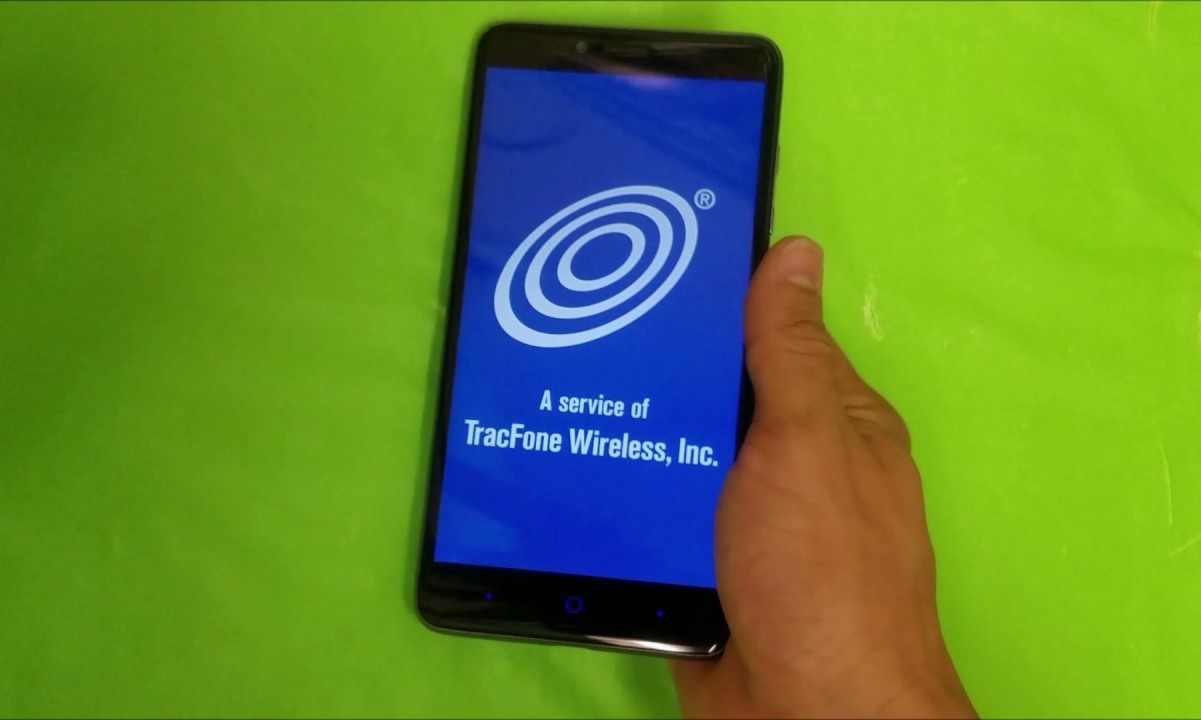What is a SIM Card?
A SIM card, or Subscriber Identity Module card, is a small, removable smart card that is inserted into mobile devices, such as smartphones, tablets, and some feature phones. It serves as the link between the mobile device and the mobile network, enabling users to make calls, send text messages, and access mobile data services.
The SIM card contains essential information that uniquely identifies the user and the mobile device on the network. This includes the International Mobile Subscriber Identity (IMSI) number, the Integrated Circuit Card Identifier (ICCID), and the Mobile Station International Subscriber Directory Number (MSISDN). These numbers play a crucial role in facilitating communication and data access for the user.
In addition to identifying the user and the device, the SIM card also stores security information, such as authentication keys and encryption algorithms, which are used to protect the user's communication and data privacy. This ensures that only authorized users can access the mobile network and that their communications are secure.
Furthermore, SIM cards come in different sizes, including standard SIM, micro-SIM, and nano-SIM, to accommodate various types of mobile devices. The evolution of SIM card technology has also led to the development of embedded SIM (eSIM) technology, which eliminates the physical SIM card and allows for remote provisioning of mobile subscriptions.
Overall, the SIM card is a fundamental component of mobile communication, providing the necessary identification, security, and connectivity features that enable users to stay connected and access mobile services seamlessly.
The Structure of a SIM Card
A SIM card comprises several essential components that work together to enable seamless communication and data access on mobile devices. Understanding the structure of a SIM card is crucial for appreciating its role in facilitating mobile connectivity.
Physical Components
The physical structure of a SIM card typically consists of a small, rectangular plastic card measuring approximately 25 mm by 15 mm. It is designed to fit into a SIM card slot in mobile devices. The card is characterized by a metallic chip embedded within it, which contains the crucial data and information necessary for its functionality.
Integrated Circuit Card Identifier (ICCID)
The ICCID is a unique identification number assigned to each SIM card. It comprises 19 to 20 digits and is used to identify the SIM card itself. This number is essential for activating the SIM card, associating it with a mobile network, and tracking it within the network's systems.
International Mobile Subscriber Identity (IMSI)
The IMSI is a unique identification number that is stored in the SIM card's memory. It consists of 15 digits and is used to identify the user within the mobile network. The IMSI plays a crucial role in authenticating the user and enabling access to mobile services.
Mobile Station International Subscriber Directory Number (MSISDN)
The MSISDN is the mobile phone number associated with the SIM card. It is used by the mobile network to route calls and messages to the appropriate device. The MSISDN is essential for establishing communication with the mobile device and is often printed on the SIM card itself.
Authentication and Security Components
In addition to the identification numbers, the SIM card also contains authentication and security components, including encryption keys and algorithms. These components are essential for securing communications and data access, ensuring that only authorized users can connect to the network and that their communications remain private and secure.
Understanding the structure of a SIM card provides insight into its functionality and importance in the realm of mobile communication. The combination of physical and digital components within the SIM card enables seamless connectivity and secure access to mobile services, making it an indispensable element in the mobile technology ecosystem.
The Meaning of the Numbers on a SIM Card
The numbers on a SIM card play a pivotal role in identifying both the card and the user, enabling seamless communication and data access. Understanding the meaning behind these numbers provides valuable insight into the functioning of a SIM card.
Integrated Circuit Card Identifier (ICCID)
The ICCID, comprising 19 to 20 digits, serves as a unique identifier for the SIM card itself. This number is crucial for activating the SIM card and associating it with a mobile network. It allows mobile network operators to track and manage SIM cards within their systems. Additionally, the ICCID facilitates the provisioning of mobile services and aids in the identification of the SIM card when it is used in different devices.
International Mobile Subscriber Identity (IMSI)
The IMSI, consisting of 15 digits, is a unique identification number stored in the SIM card's memory. It plays a vital role in authenticating the user within the mobile network. When a mobile device connects to the network, the IMSI is used to verify the user's identity and grant access to mobile services. This number is essential for routing calls, messages, and data to the appropriate user within the network.
Mobile Station International Subscriber Directory Number (MSISDN)
The MSISDN is the mobile phone number associated with the SIM card. It is used by the mobile network to route calls and messages to the user's device. This number enables seamless communication by ensuring that incoming calls and messages are directed to the correct mobile device. The MSISDN also allows users to make outgoing calls and send messages, serving as their unique identifier within the mobile network.
In essence, the numbers on a SIM card, including the ICCID, IMSI, and MSISDN, collectively form the foundation for mobile connectivity and communication. They enable the seamless identification of the SIM card and the user, ensuring secure access to mobile services while facilitating efficient communication within the mobile network.
Understanding the ICCID Number
The Integrated Circuit Card Identifier (ICCID) is a fundamental component of a SIM card, serving as a unique identifier that distinguishes one SIM card from another. Comprising 19 to 20 digits, the ICCID plays a crucial role in the activation and management of SIM cards within mobile networks.
The ICCID is structured in a specific format, with the initial digits representing the Issuer Identification Number (IIN), followed by the individual account identification number and a check digit. This format allows mobile network operators to identify the SIM card's origin and manage its activation and provisioning efficiently.
When a user acquires a new SIM card, the ICCID is used to associate the card with the mobile network, enabling the user to access mobile services. Additionally, the ICCID facilitates the tracking and management of SIM cards within the network's systems. This is particularly important for mobile network operators, as it allows them to monitor and control the usage and provisioning of SIM cards across their networks.
Furthermore, the ICCID plays a crucial role in enabling the interoperability of SIM cards across different mobile devices. As the ICCID uniquely identifies the SIM card itself, it allows users to switch their SIM cards between compatible devices without losing their mobile service subscriptions. This flexibility is particularly valuable in scenarios where users upgrade to new devices or need to replace a lost or damaged SIM card.
In addition to its role in activation and provisioning, the ICCID also serves as a means of identifying and authenticating SIM cards in various applications and services. For example, in the realm of Internet of Things (IoT) devices, the ICCID is used to uniquely identify and manage SIM cards embedded in connected devices, enabling secure and reliable connectivity for IoT applications.
Overall, the ICCID number is a critical element of the SIM card, providing a unique identifier that facilitates activation, management, and interoperability within mobile networks. Its structured format and essential role in mobile connectivity make it an indispensable component of the SIM card ecosystem.
Understanding the IMSI Number
The International Mobile Subscriber Identity (IMSI) number is a pivotal component stored within the SIM card's memory. Comprising 15 digits, the IMSI serves as a unique identifier for the user within the mobile network. This number plays a critical role in authenticating the user and enabling access to mobile services.
The IMSI is structured in a specific format, with the initial digits representing the Mobile Country Code (MCC) and the Mobile Network Code (MNC), which identify the user's home country and mobile network operator, respectively. The remaining digits form the Mobile Subscriber Identification Number (MSIN), which uniquely identifies the user within the network.
When a mobile device attempts to connect to the mobile network, the IMSI is transmitted to the network's authentication center for verification. This process is essential for ensuring that only authorized users can access the network and its services. Once the IMSI is validated, the user is granted access to make calls, send messages, and access mobile data, based on their subscription and network coverage.
Moreover, the IMSI plays a crucial role in facilitating the routing of calls and messages to the user's device. When a call or message is directed to a specific mobile number, the IMSI is used to identify the user within the network and route the communication to the appropriate device. This seamless routing ensures that users can receive incoming calls and messages without any disruptions.
In addition to its role in authentication and communication routing, the IMSI number is also used in various network management and optimization processes. Mobile network operators utilize the IMSI to track and manage user subscriptions, monitor network usage, and optimize network performance to deliver a seamless and reliable mobile experience to subscribers.
Furthermore, the IMSI is a critical component in the realm of mobile roaming. When users travel to foreign countries, their IMSI is used to identify them within the visited network, enabling seamless access to mobile services while roaming. This ensures that users can stay connected and access mobile services even when outside their home network's coverage area.
In summary, the IMSI number is a fundamental element of the SIM card, serving as a unique identifier for the user within the mobile network. Its role in authentication, communication routing, network management, and roaming underscores its significance in enabling seamless and secure mobile connectivity for users worldwide.
Understanding the MSISDN Number
The Mobile Station International Subscriber Directory Number (MSISDN) is a crucial identifier associated with a SIM card, representing the mobile phone number assigned to the user. This number plays a pivotal role in enabling seamless communication and connectivity within the mobile network.
The MSISDN is structured in a specific format, typically comprising a country code, an area code or network code, and the subscriber's unique number. For instance, in the format +1 (555) 123-4567, the country code is +1, the area code is 555, and the subscriber's unique number is 123-4567. This structured format allows for global standardization and seamless communication across different mobile networks and countries.
When a call or message is initiated to a specific mobile number, the MSISDN is used to route the communication to the intended recipient's device. This process ensures that incoming calls and messages are directed to the correct user within the mobile network, facilitating efficient and reliable communication.
Moreover, the MSISDN enables users to make outgoing calls and send messages, serving as their unique identifier within the mobile network. When a user initiates a call or sends a message, the MSISDN is transmitted to the network, allowing the network to identify the user and establish the communication link.
The MSISDN also plays a crucial role in various network services and features, including call forwarding, caller ID display, and short message service (SMS). It enables users to customize their communication preferences and manage their incoming and outgoing calls and messages effectively.
Furthermore, the MSISDN is essential for mobile number portability, allowing users to retain their phone numbers when switching between mobile network operators. This flexibility empowers users to change their service providers without losing their established mobile phone numbers, contributing to a seamless and user-centric mobile experience.
In essence, the MSISDN number serves as a fundamental component of the SIM card, facilitating communication, identification, and customization within the mobile network. Its structured format and role in routing calls and messages underscore its significance in enabling seamless and reliable mobile connectivity for users worldwide.
How to Read the Numbers on a SIM Card
Understanding how to read the numbers on a SIM card is essential for grasping the intricate details that define its functionality. Each number on a SIM card plays a distinct role in facilitating mobile communication and data access. Here's a breakdown of the process:
-
ICCID: The Integrated Circuit Card Identifier (ICCID) is typically printed on the SIM card and comprises 19 to 20 digits. When reading the ICCID, it is essential to recognize that the initial digits represent the Issuer Identification Number (IIN), followed by the individual account identification number and a check digit. By understanding this structure, users can identify the origin of the SIM card and comprehend its activation and provisioning within a mobile network.
-
IMSI: The International Mobile Subscriber Identity (IMSI) is stored within the SIM card's memory and consists of 15 digits. Reading the IMSI involves recognizing the structure, where the initial digits denote the Mobile Country Code (MCC) and the Mobile Network Code (MNC), followed by the Mobile Subscriber Identification Number (MSIN). This unique identifier plays a crucial role in authenticating the user within the mobile network and facilitating communication and data access.
-
MSISDN: The Mobile Station International Subscriber Directory Number (MSISDN) represents the mobile phone number associated with the SIM card. When reading the MSISDN, it is important to understand its structured format, typically comprising a country code, an area code or network code, and the subscriber's unique number. This number enables seamless communication by routing calls and messages to the correct user within the mobile network.
By comprehending the structure and significance of these numbers, users can gain a deeper understanding of the essential components that drive mobile connectivity and communication. This knowledge empowers users to make informed decisions regarding their mobile devices and subscriptions, ultimately enhancing their overall mobile experience.
Importance of the Numbers on a SIM Card
The numbers on a SIM card hold immense importance in the realm of mobile communication and connectivity. Each number, including the ICCID, IMSI, and MSISDN, serves a distinct purpose and collectively contributes to the seamless functioning of mobile devices within the network.
Firstly, the Integrated Circuit Card Identifier (ICCID) acts as a unique identifier for the SIM card itself. This number is essential for activating the SIM card, associating it with a mobile network, and tracking it within the network's systems. The ICCID enables mobile network operators to efficiently manage and provision SIM cards, ensuring that users can access mobile services seamlessly.
Secondly, the International Mobile Subscriber Identity (IMSI) number, stored within the SIM card's memory, plays a pivotal role in authenticating the user within the mobile network. This unique identifier enables users to access mobile services securely while facilitating efficient communication and data access. Additionally, the IMSI is crucial for routing calls and messages to the appropriate user within the network, ensuring seamless connectivity.
Furthermore, the Mobile Station International Subscriber Directory Number (MSISDN) represents the mobile phone number associated with the SIM card. This number enables users to make and receive calls, send and receive messages, and access mobile data services. The MSISDN serves as the user's unique identifier within the mobile network, facilitating seamless communication and connectivity.
The importance of these numbers extends beyond mere identification and authentication. They are integral to enabling mobile number portability, allowing users to retain their phone numbers when switching between mobile network operators. Additionally, these numbers play a crucial role in mobile roaming, ensuring that users can access mobile services while traveling to foreign countries.
In essence, the numbers on a SIM card are not just random sequences of digits; they form the backbone of mobile connectivity, enabling secure authentication, seamless communication, and efficient data access for users worldwide. Understanding the significance of these numbers empowers users to make informed decisions regarding their mobile subscriptions and devices, ultimately enhancing their overall mobile experience.
Conclusion
In conclusion, the numbers on a SIM card, including the ICCID, IMSI, and MSISDN, are not just arbitrary sequences of digits; they are the foundational elements that enable seamless mobile communication and connectivity. Each number serves a distinct purpose, collectively contributing to the secure authentication, efficient communication routing, and seamless data access for mobile users.
The Integrated Circuit Card Identifier (ICCID) acts as a unique identifier for the SIM card itself, facilitating its activation, association with mobile networks, and tracking within network systems. This number is crucial for mobile network operators to efficiently manage and provision SIM cards, ensuring that users can access mobile services seamlessly.
The International Mobile Subscriber Identity (IMSI) number, stored within the SIM card's memory, plays a pivotal role in authenticating the user within the mobile network. It enables secure access to mobile services while facilitating efficient communication and data access. Additionally, the IMSI is essential for routing calls and messages to the appropriate user within the network, ensuring seamless connectivity.
Furthermore, the Mobile Station International Subscriber Directory Number (MSISDN) represents the mobile phone number associated with the SIM card. This number enables users to make and receive calls, send and receive messages, and access mobile data services. The MSISDN serves as the user's unique identifier within the mobile network, facilitating seamless communication and connectivity.
Understanding the significance of these numbers empowers users to make informed decisions regarding their mobile subscriptions and devices, ultimately enhancing their overall mobile experience. Whether it's the activation of a new SIM card, the seamless transition between mobile devices, or the ability to stay connected while traveling abroad, these numbers play a fundamental role in shaping the modern mobile experience.
In a world where connectivity is paramount, the numbers on a SIM card stand as the silent enablers of our digital lives. They ensure that our devices are not just tools, but gateways to a world of communication, information, and opportunity. As technology continues to evolve, these numbers will remain steadfast in their role, anchoring the mobile experience in a landscape of constant change and innovation.







